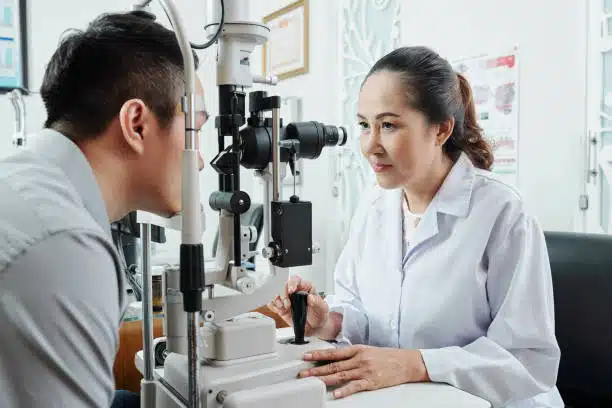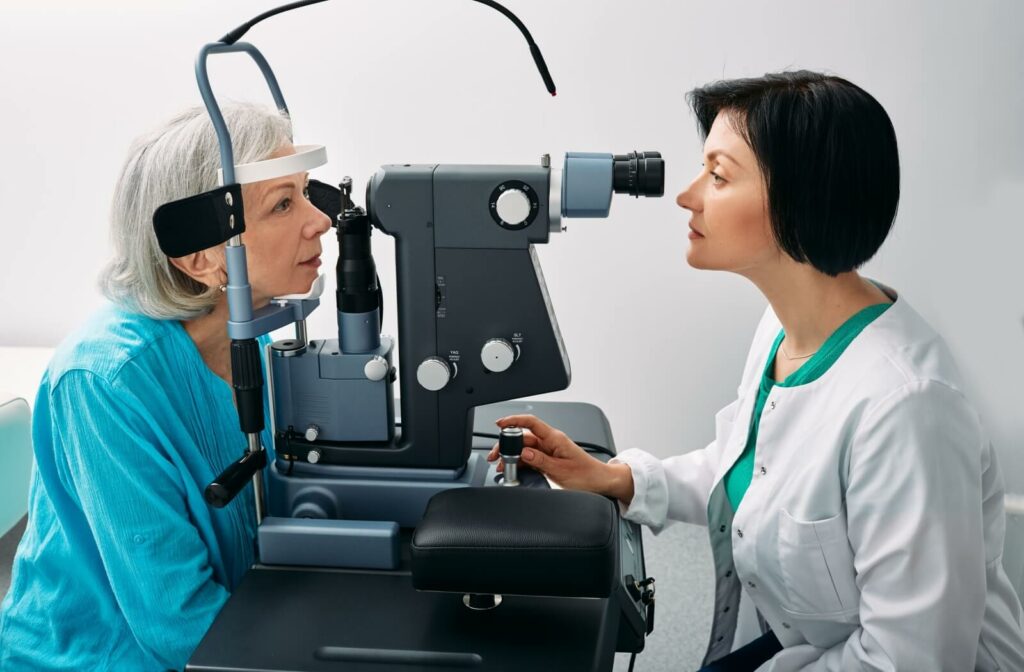Why Selecting an Eye Doctor Optometrist is Important for Your Eyes
Why Selecting an Eye Doctor Optometrist is Important for Your Eyes
Blog Article
Checking Out the most up to date Technological Innovations in Optometry and What They Mean for Optometrists
From the accuracy of Optical Comprehensibility Tomography to the nuanced understandings used by AI-driven analysis tools, these advancements are establishing new requirements in patient analysis and treatment. As these advancements permeate the method, eye doctors are encountered with the challenge of embracing these tools to boost patient end results.
Developments in Diagnostic Devices
Advancing the field of optometry, technologies in diagnostic tools have changed the means eye treatment experts assess and identify eye problems and aesthetic problems. The previous years has actually witnessed significant technological advancements, enabling more precise and detailed evaluations.
One more trick innovation is the intro of innovative corneal topography systems, which map the surface area curvature of the cornea with precision. These devices are specifically helpful for suitable get in touch with lenses and detecting corneal conditions. Electronic retinal imaging has changed traditional ophthalmoscopy, using in-depth, scenic views of the retina that promote detailed visual exams.
The development of wavefront aberrometry has actually also been critical, making it possible for the evaluation of refractive mistakes with unparalleled accuracy (Eye Doctor Optometrist). This technology aids in customizing restorative lenses and boosting medical results for refractive surgical treatments. Collectively, these diagnostic improvements encourage eye doctors to deliver remarkable client care, guaranteeing very early intervention and customized treatment approaches, inevitably improving aesthetic health outcomes
AI in Individual Monitoring
Building on the structure of advanced analysis tools, the incorporation of synthetic knowledge (AI) in patient monitoring represents a transformative leap for optometry. AI systems are increasingly used to enhance effectiveness, accuracy, and customization in patient treatment.
Furthermore, AI-driven platforms assist in structured patient communications and administrative procedures. Automated scheduling, virtual examinations, and individualized follow-up plans not only boost patient satisfaction yet also optimize time management for specialists. These systems can triage clients based upon the urgency of their conditions, guaranteeing that those in vital need receive timely focus.
Furthermore, AI enhances decision-making by giving optometrists with evidence-based recommendations and treatment paths. By incorporating data from electronic wellness documents, AI devices offer understandings that inform scientific decisions, reducing the threat of mistakes and boosting person outcomes. As AI continues to progress, its function in individual monitoring will likely expand, reshaping the landscape of optometric care.
Developments in Retinal Imaging
In the realm of optometry, retinal imaging has experienced impressive technical developments that are enhancing analysis abilities and client treatment. Developments such as Optical Coherence Tomography (OCT) and fundus digital photography have revolutionized how optometrists envision and examine the retina. OCT, in certain, provides high-resolution, cross-sectional images of the retina, permitting the detailed evaluation of its layers. This ability is invaluable for early discovery and management of problems like glaucoma, diabetic retinopathy, and age-related macular degeneration.
Improved imaging methods like OCT angiography are further refining diagnostic accuracy. This non-invasive strategy maps blood circulation in the retina, using vital understandings into vascular health without the need for color injections. Furthermore, flexible optics innovation is being integrated into retinal imaging systems to remedy ocular aberrations, delivering unmatched picture clarity. Such improvements help with the recognition of minute retinal modifications that could symbolize condition progression. Look At This
Furthermore, improvements in artificial intelligence are boosting retinal imaging by making it possible for computerized analysis of large datasets. These systems help eye doctors in identifying patterns a sign of pathology, therefore improving analysis accuracy and efficiency. Jointly, these technologies are transforming retinal imaging right into a keystone of contemporary eye treatment, enhancing results and broadening therapeutic opportunities.
Teleoptometry's Expanding Role
Teleoptometry is increasingly ending up being an essential component of eye treatment, driven by innovations in electronic communication and analysis devices. As optometry accepts electronic makeover, teleoptometry assists in remote consultations, permitting optometrists to prolong their solutions beyond conventional limits. This is specifically advantageous in country and underserved areas where access click to investigate to specialized eye care is often minimal. By leveraging high-resolution video clip conferencing and progressed retinal imaging, optometrists can carry out comprehensive eye exams from afar, making sure timely medical diagnosis and therapy.
The combination of man-made intelligence (AI) more improves teleoptometry, enabling the evaluation of aesthetic information and aiding in the detection of ocular conditions such as glaucoma and diabetic retinopathy. AI-powered algorithms can swiftly translate complex imaging data, offering optometrists with beneficial insights that bolster professional decision-making.
Moreover, teleoptometry supports continuity of treatment through seamless integration with electronic health and wellness records (EHRs), permitting optometrists to preserve detailed patient histories. When seeking advice from with various practitioners., this makes certain that people obtain regular and personalized treatment also.
Regardless of these benefits, difficulties remain, consisting of ensuring data safety and security and taking care of client expectations. However, teleoptometry represents a substantial stride in the direction of even more available, efficient, and patient-centered eye care. As innovation develops, its function is positioned to increase better.

Future Trends in Eye Treatment
A myriad of cutting-edge trends is readied to reshape the future of eye treatment, driven by technological advancements and the advancing demands of individuals. One substantial trend is the assimilation of expert system (AI) in diagnostics, which guarantees to improve the precision and efficiency of eye assessments. AI formulas can evaluate vast quantities of data from retinal photos, potentially discovering conditions like diabetic retinopathy and glaucoma earlier than typical approaches.
Moreover, customized medicine is gaining grip in optometry, with hereditary screening notifying personalized therapy plans. This method aims to optimize patient outcomes by customizing interventions to specific genetic accounts. Wearable technology, such as smart contact lenses, is also imminent, using real-time monitoring of intraocular stress or sugar degrees, hence supplying continuous understandings into systemic and ocular health.
The fostering of increased truth (AR) and YOURURL.com virtual fact (VIRTUAL REALITY) in training and person education is one more arising fad. These technologies supply immersive experiences that can boost understanding and abilities both for clients and optometrists. As these trends advance, optometrists must stay abreast of technical advancements to give sophisticated treatment, making sure improved individual outcomes and contentment in the vibrant landscape of eye care.
Conclusion

Jointly, these diagnostic developments equip optometrists to provide exceptional person care, ensuring early intervention and customized therapy approaches, eventually enhancing aesthetic health end results.

As these innovations continue to develop, optometrists must adapt and integrate them right into practice, eventually enhancing process effectiveness and raising the criterion of eye treatment delivered to individuals.
Report this page